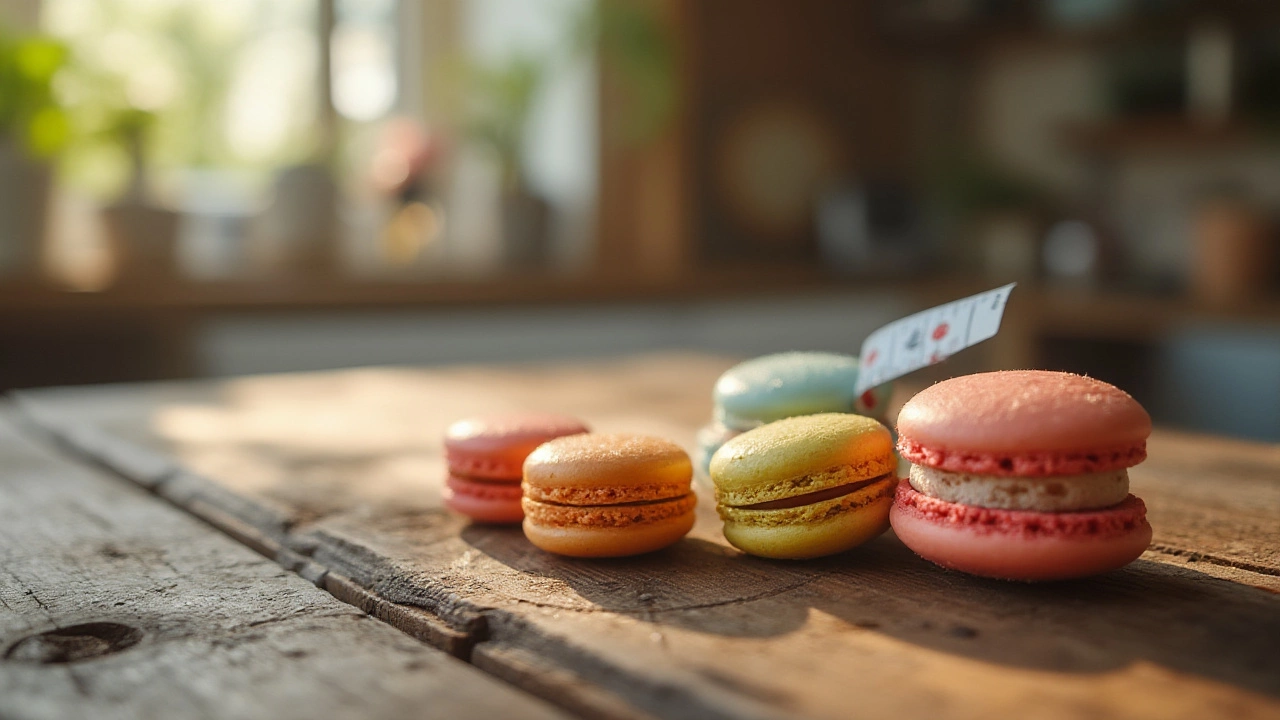
Macaron Size Guide: Discovering the Perfect Macaron Diameter for Baking and Serving
Find out the ideal macaron size, how it affects taste and texture, why classic diameters matter, and get practical baking tips for macarons at home or in bakeries.
If you’ve seen those delicate pastel shells on Instagram, you know they look fancy. A traditional macaron is simply a pair of smooth, slightly chewy shells made from almond flour, egg whites, and sugar, sandwiched around a creamy filling. No fancy colors or exotic flavors needed – the classic version lets the texture do the talking. Below you’ll find everything you need to start baking them without the usual frustration.
The recipe boils down to four basics: almond flour, powdered sugar, egg whites, and granulated sugar. Use a fine, blanched almond flour that’s been sifted at least twice to avoid gritty spots. Powdered sugar adds smoothness and helps the shells stay glossy. Fresh egg whites are a must; older whites won’t whip up as stiffly and can cause cracks. Granulated sugar stabilizes the meringue. If you want a hint of flavor, a splash of vanilla extract or a pinch of sea salt works fine, but keep it subtle for the traditional taste.
First, whisk the egg whites until they’re foamy, then gradually add the granulated sugar while the mixer runs on medium speed. You’re looking for a glossy, stiff peak – the ribbons should hold their shape when you lift the whisk. In a separate bowl, whisk together the almond flour and powdered sugar, then gently fold the dry mix into the meringue. The batter should flow like lava; run a spatula through it and the batter should form a ribbon that disappears after a few seconds. Pipe uniform circles onto a parchment‑lined tray, then let them rest for 30‑45 minutes. The surface should feel dry to the touch before they go into a pre‑heated oven at 150 °C (300 °F) for about 12‑15 minutes. Let them cool completely before pairing and filling.
Common mistakes include over‑mixing, which makes the batter too runny, and under‑mixing, which leads to cracked shells. Also, avoid opening the oven door during baking; a sudden temperature drop can cause the tops to collapse. If you notice a slight crust forming before the rest of the batch is done, lower the temperature a few degrees and add a minute or two.
For fillings, keep it simple: buttercream, ganache, or a light jam work best with traditional shells. Spread a thin layer, gently sandwich the shells together, and let the assembled macarons rest in the fridge for at least an hour. This rest period lets the flavors meld and the shells soften slightly, giving that perfect melt‑in‑your‑mouth feel.
Practice makes perfect. Start with one small batch, note any issues, and adjust the resting time or oven temperature as needed. The more you bake, the better you’ll sense the right batter consistency and the perfect piping size. Before long, you’ll be pulling off classic French macarons that look as good as they taste.

Find out the ideal macaron size, how it affects taste and texture, why classic diameters matter, and get practical baking tips for macarons at home or in bakeries.